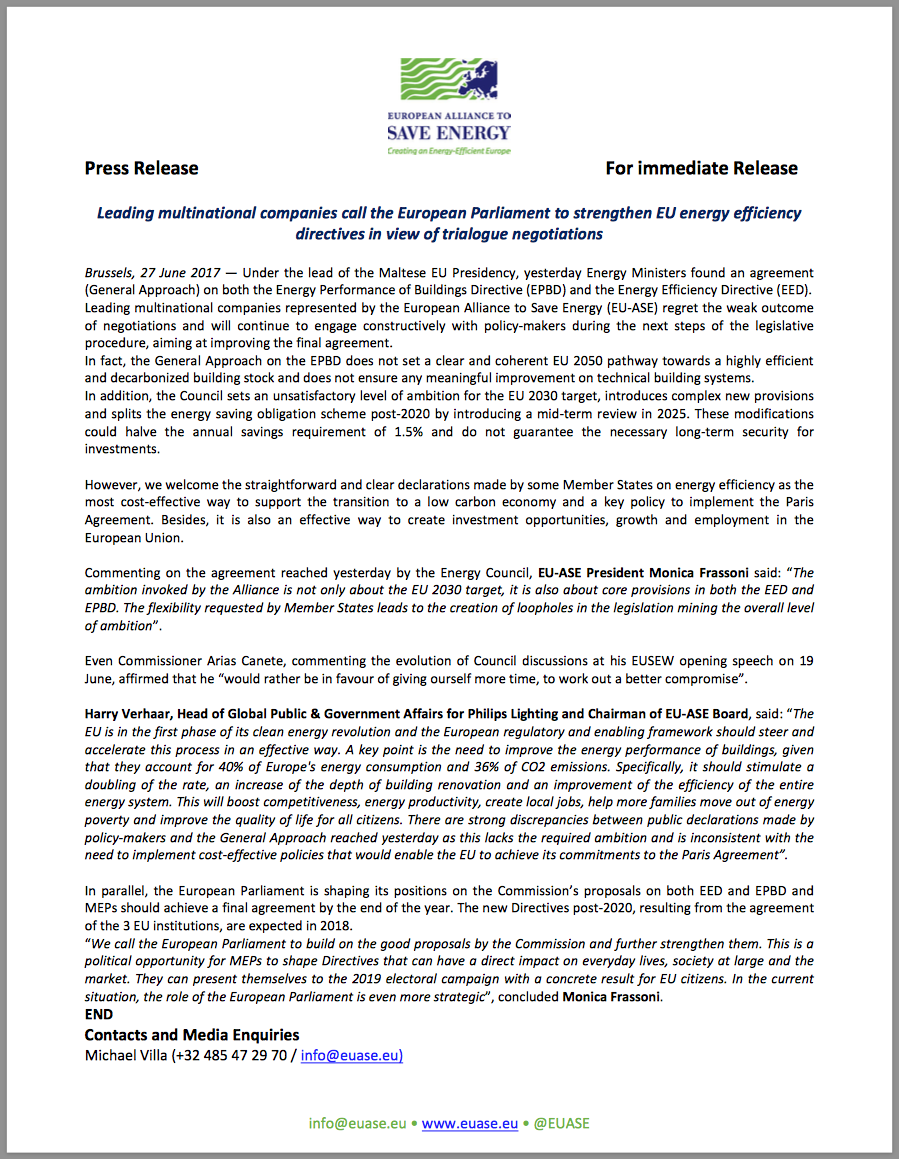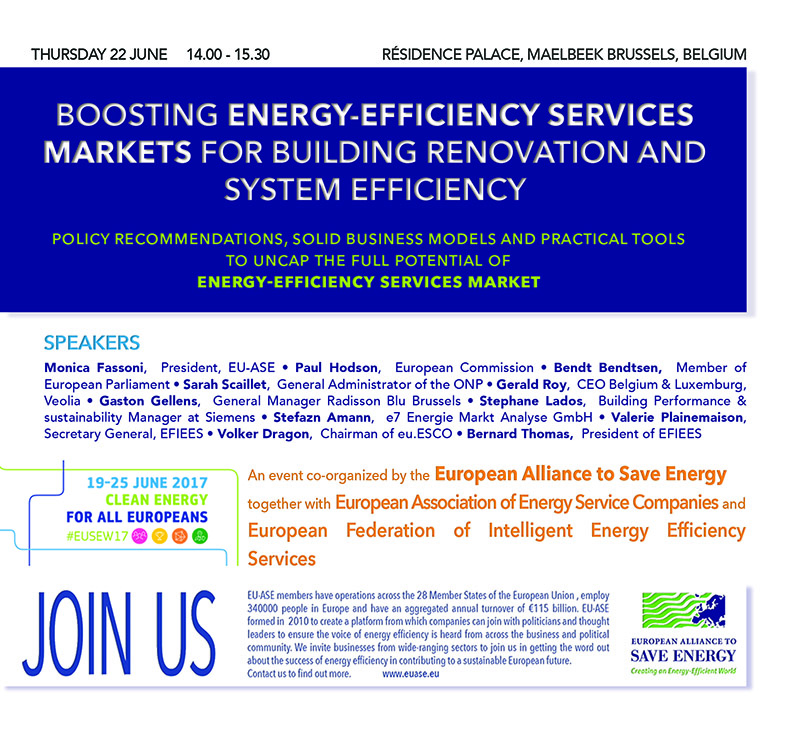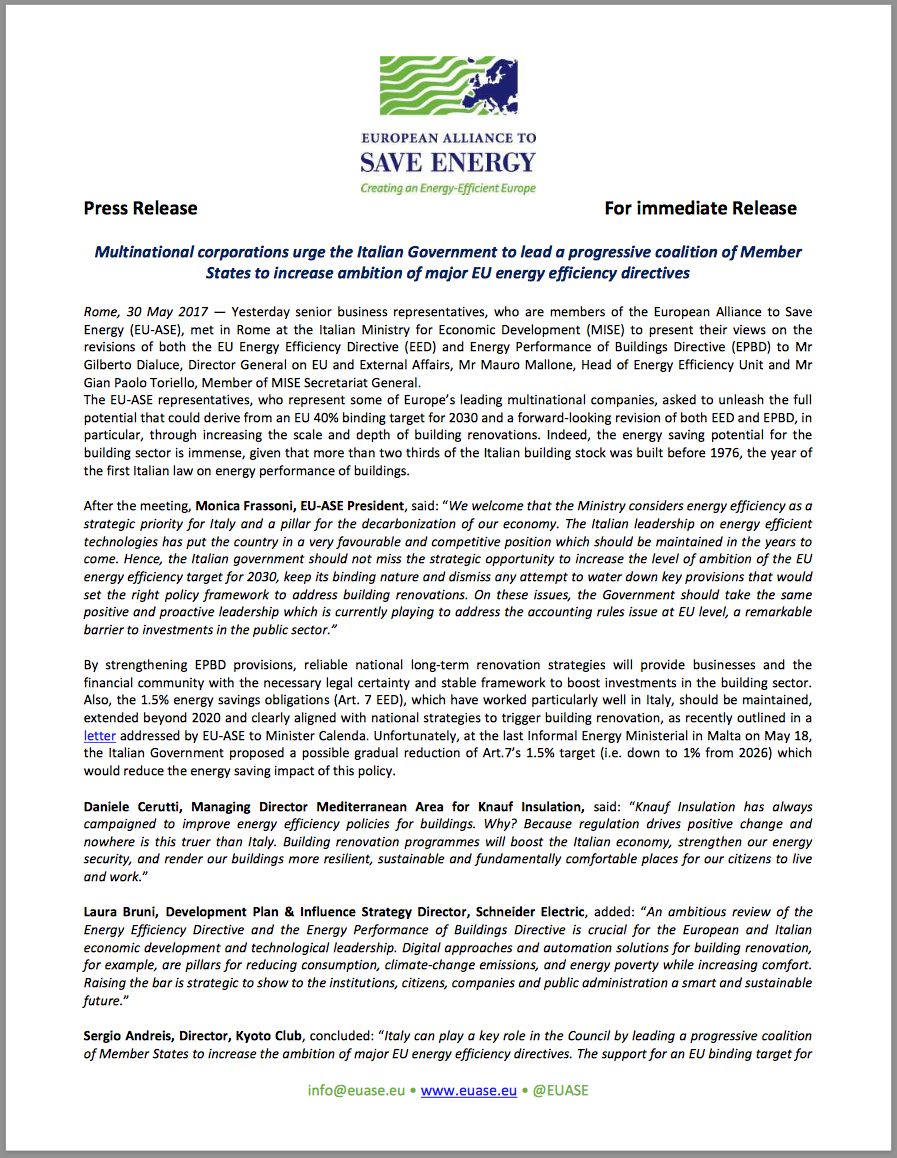European Alliance to Save Energy views on the draft ITRE Report on the Energy Performance of Building Directive (EPBD) the European Alliance to Save Energy (EU-ASE) welcomes Mr Bendtsen MEP’s draft report on the EPBD revision
Dear Members,
Re: European Alliance to Save Energy views on the draft ITRE Report on the Energy Performance of Building Directive (EPBD) the European Alliance to Save Energy (EU-ASE) welcomes Mr Bendtsen MEP’s draft report on the EPBD revision which sets a very good basis for the EPBD to support the reduction of energy consumption of the existing building stock, in line with the Efficiency First principle. We fully endorse the rapporteur’s view that “an ambitious and future-proof Directive for the Energy Performance of Buildings is (…) needed to secure a highly energy efficient and decarbonised European building stock.”
EU-ASE regrets that yesterday the Energy Council has reached a General Approach on a very weak EPBD text which waters down the Commission’s proposal. The General Approach has weakened many provisions which do not set a clear and coherent EU 2050 pathway towards a highly efficient and decarbonized building stock and do not ensure any meaningful improvement on technical building systems.
In this perspective, EU-ASE is ready to offer support to all ITRE Committee Members to further improve and strengthen some articles to get an ambitious revision of the EPBD and make it a true success for citizens, businesses and investors.
EU-ASE has identified 3 main areas where the draft report should be enhanced:
• The EPBD must be aligned and coherent with a cost-effective EU energy efficiency target: the EPBD should head towards achieving an overall binding 40% energy efficiency target. This level of ambition, already supported by the European Parliament, is pivotal for the EU to deliver on the Paris Agreement and ensure the expected savings alongside health, energy security and jobs benefits. This ambition is based on in-depth evaluation of the aggregated savings potentials in key sectors, notably buildings and transport, and is entirely feasible under current market conditions with existing technologies.
• Further strengthening of ambitious national long-term renovation strategies: we welcome the rapporteur’s approach to link and clarify the contribution of these strategies to the achievement of the EU 2030 target for energy efficiency. In this sense, EU-ASE fully endorses the requirement to Member States to shape comprehensive and ambitious building renovation strategies, and to make clear their contribution to the achievement of the EED target.
We encourage ITRE members to support and consolidate these strategies:
– The objective should now be on reinforcing the national renovation strategies with a focus on worst performing buildings, the addition of trigger points, a new milestone set at 2040 and the clarification that the 2050 final goal is to ensure a highly energy efficient and decarbonised building stock (in line with the correct implementation of the Efficiency First principle).
– Member States should be encouraged to plan their renovation strategies in terms of district and entire energy systems to reap the full potential of high-efficiency energy demand and supply solutions and achieve energy efficiency gains throughout the entire energy chain. By doing so, renovation strategies will also achieve synergies in terms of possible use of waste heat, and integrations of various parts of energy systems (heat, electricity, buildings and transport) adding to potential energy gains.
– Further strengthening is necessary to ensure that the long-term renovation strategies lead to concrete actions. The national strategies must have a differentiated approach and targets for buildings categories to consider cost-competitiveness and streamline the mobilization of financing. They should also make room for energy performance services and contracts that can contribute towards significant energy savings with little to no capex in short periods of time.
– Building Renovation Passports should be fostered as tools to accelerate and support ambitious, coordinated step-by-step building renovation.
• Optimising Technical Building Systems: the report is missing meaningful improvements for provisions related to technical building systems, that would fully embrace the cost-effective potential for energy management at building level through building automation, control, monitoring, management systems and built-in lighting. Notably, strengthened articles 8.5, 8.6, Article 14 and Article 15 are critical to ensure appropriate adjustment and control of technical building systems. In order to accelerate renovation and enable buildings’ connectivity to the energy system, key functionalities shall be prescribed in non-residential buildings over 250 MWh/a and in residential buildings with central technical building system of over 100kw power. Additionally, appropriate control functionalities in individual rooms are needed in particular in those residential buildings.
Further details on our positions concerning both the Energy Efficiency Directive (EED) and the Energy Performance of Buildings Directive (EPBD) are included in the Position Papers enclosed to this letter.



